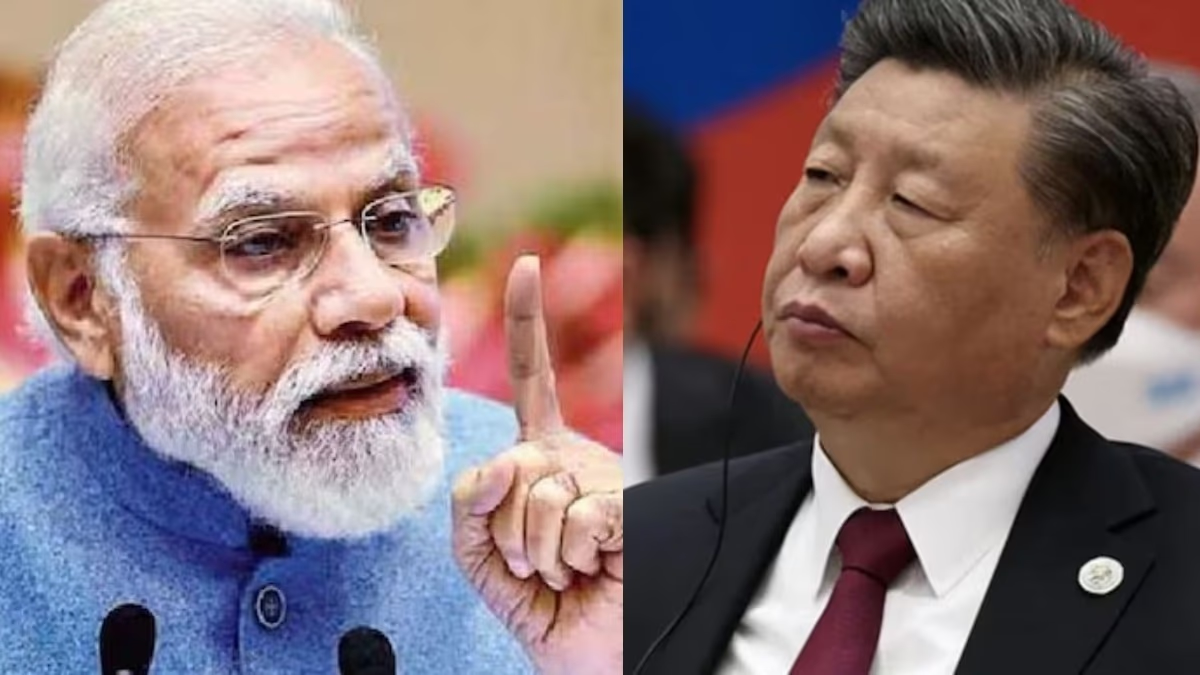Since the Galwan Valley clash in 2020, Indo-China relations have remained tense. The opposition has alleged that China occupied 1,000 square kilometers in Ladakh and built bunkers near Pangong Lake. Despite 21 rounds of military talks, there has been no significant progress since 2020. Perhaps for this reason, India openly banned goods and many applications from China. After Operation Sundoor, is India about to start Boycott Part-2 of Chinese goods?
Prime Minister Narendra Modi today advocated boycotting foreign goods in Gujarat. He appealed to the citizens to adopt indigenous goods and reduce the use of foreign items. The objective is to make India economically self-reliant and achieve the goal of a developed India by 2047.
The PM's speech on boycotting foreign goods directly relates to China, as Indian markets have been flooded with Chinese products for the past two decades. From referencing water guns to Lord Ganesha in his Gandhinagar speech, Modi clearly indicates which country he is pointing towards. The boycott that began after the Galwan clash needs to be reignited once again. Let's see why it is crucial for India to boycott Chinese products.
China Continues to Agitate Pakistan and Bangladesh
China is using economic, military, and diplomatic means to strategically provoke Pakistan and Bangladesh against India, with the aim of weakening India regionally and increasing its influence in South Asia. Under the Belt and Road Initiative (BRI), China has heavily invested in Pakistan and Bangladesh. Billions of dollars have been spent on infrastructure projects via the China-Pakistan Economic Corridor (CPEC) in Pakistan. China's planning also involves extending CPEC to Afghanistan.
China supplies weapons and technology to Pakistan, such as PL-15 missiles and J-10C fighter jets, which were used against India during Operation Sundoor (May 2025), but the Indian army successfully countered them. China has also provided military assistance to Bangladesh, planning to build military bases near the Chicken's Neck area in India's northeast.
After the Pahalgam attack (April 2025), China openly supported Pakistan, calling India's military actions unfortunate and appealing for restraint. Following the fall of Sheikh Hasina's government in Bangladesh, China strengthened strategic partnerships with the new government, promoting anti-India activities.
With its String of Pearls strategy, China aims to increase influence in the Bay of Bengal and the Indian Ocean by leveraging Bangladesh and Pakistan. The presence of Chinese spy ship Da Yang Hao in Bangladesh and the development of Gwadar Port under CPEC are part of China’s strategy to encircle India.
Economic Pressure is Unrelenting
In 2024, India's trade deficit with China stood at $48.5 billion. India relies on China for electronics (20%), pharmaceuticals (70% API), and automobile parts (24%). If the boycott appeal works as intended, it could reduce the trade deficit and boost the Make in India initiative.
Under the PLI scheme, India has increased iPhone production to 14-15% of the global share. The boycott appeal could accelerate self-reliance and attempt to replace China in the global supply chain. Companies like Apple and Tesla are investing in India. The boycott appeal sends a message to global companies that India is a reliable alternative.
Is This a Strike on China?
In FY 2023-24, bilateral trade between India and China was $118.4 billion, with India importing $101.75 billion and exporting only $16.66 billion, leaving a trade deficit of $85.09 billion. If India completely bans Chinese goods, China could lose this import revenue ($101.75 billion). However, a complete ban is not practically possible, as India depends on China for raw materials in many sectors like electronics, pharmaceuticals, and several industries. Partial boycotts led to a 25-40% decrease in Chinese goods sales post the 2020 Galwan dispute, causing an estimated 40,000 crore rupees loss to China.
India's toy industry is heavily affected by Chinese imports, occupying 80% of the market along with Italy. A boycott could boost the Indian toy industry, causing China losses of thousands of crores annually in this sector. Similarly, 70-80% of solar and thermal power sector equipment comes from China. Increased indigenous production in these sectors would affect China's exports.
Globally, China's exports to India account for only 2% of its total exports, while India sends 8% of its total exports to China. Thus, India's boycott would not majorly impact China's economy, but if US-China relations sour, losing India's partnership could be costly for China. Therefore, this is the right time for India to teach China a lesson.




